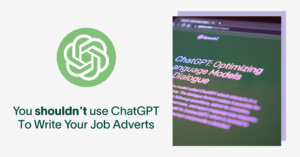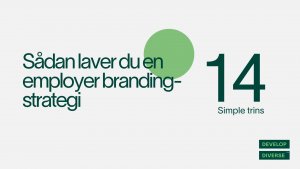Over the last few years, we’ve seen a lot of progress and awareness on DEI. Organisations understand its value beyond its bottom line benefits — and many, for the first time, are committing to it on a scale that has never been seen before.
But while awareness is moving in the right direction, progress is still slow. That’s because even with the best strategy, DEI leaders still face huge resistance to their efforts internally.
We all know that DEI is good for businesses and for humans. So what makes people resist? And most importantly, how can DEI leaders overcome the resistance to scaffold progress in their initiatives?
What makes us resistant to change on DEI?
As humans, we’re not fond of change. We like predictability and patterns. So much so, that when organisations make efforts to create more inclusive and diverse places to work, we’re hardwired to resist.
“Often, resistance is a defence mechanism,” explains Erica D’Eramo, founder and CEO of DEI consultancy Two Piers Consulting. “Instead of hearing that you want to create a more diverse organisation, some folks hear the message that there are too many people like them. We all want to believe that our success was based on fairness, however the statistics clearly point to bias in the system. That cognitive dissonance can lead to resistance. Conflict can actually be good — but you need to be able to manage it and be comfortable with it.”
Resistance to DEI can show up in a few ways:
- Leaders don’t demonstrate a focus on DEI, in terms of attention or resources.
- Team members show discomfort when talking about issues relating to DEI.
- Critical, or even defensive attitudes emerge when talking about DEI.
- Competing strategic priorities or goals that mean DEI becomes a lesser priority.
- Unwillingness to adopt new processes or ways of doing things, like following a new interview process.
- Compartmentalising DEI as an add-on activity and ‘someone else’s problem to solve.
When people feel defensive or even disinterested, it makes it much harder to open up a conversation and foster awareness on why diversity and inclusion are so critical in the first place.
“We need to recognise how corrosive the feeling of shame can be,” Erica agrees. “And I think that we just need to be careful when we have these conversations that the people who have the decision making power aren’t sort of reacting out of a feeling of shame — that’s when doors start to close.”
How to overcome resistance to change in your DEI initiatives
When launching new DEI initiatives, it’s important to remember that ignoring any resistance is only likely to cause people to resist even harder.
The key to making progress is by approaching resistance head-on, encouraging conversations, and building awareness through empathy.
Lead with curiosity to enable open conversations.
When DEI leaders meet resistance in the beginning stages of making change, Erica suggests countering it with curiosity, rather than facts. Ultimately, it’s about starting an open conversation, setting expectations, and building awareness, rather than telling people how to feel.
“It helps to start from an exploratory space,” she says. “One of the best tools early in the conversation is asking curious questions. With DEI, people are unlikely to share their fears right away. Asking open-ended questions can help you uncover those fears and get closer to what’s really driving the resistance.”
Helpful questions to guide this process include:
- If we did have a representative workforce, what would that look like?
- Where do we see the value in a representative workforce?
- What are your concerns about making changes to our recruitment process?
- How could your concerns be mitigated?
Use an outcomes-focused approach when discussing goals and changes.
Once you have a better understanding of the reasons behind resistance, you can start gaining support to change processes across your organisation. If you get pushback that your processes are already fair, Erica says it’s your cue to deepen awareness on what you’re working towards.
“A common argument is that if people do good work, they’ll get promoted,” Erica says. “If you start out by saying ‘we need to change our performance process because some people have had more advantages than others’, people are likely to hear that they didn’t earn their progression.
“You need to bring this thought process back to a logical, outcome-focused perspective, like ‘We all agree that we want to build a more agile workplace that has diversity of thought’ — or even, that you want your workplace to be more competitive.”
Leverage data to meet resistance with objectivity.
Resistance can be individual or collective — but in DEI, it’s pretty much always coming from a subjective place. As you navigate resistance, Erica says the final piece of the puzzle is bringing in objectivity in the form of data.
“When people have opened up and shared their concerns, you can better understand what data and information will provide clarity and transparency,” she says. “It’s not that change will not impact the workforce. It will. Some people who have previously benefited from an unfair advantage may not like what they see, however, most resistance is based on a fear of experiencing the very same unfairness that DEI initiatives are working to eliminate. When you have objective evidence that these concerns are unfounded, you can start laying some of the misconceptions to rest.”
Give people tools and explicit processes to follow.
Often, resistance can come from uncertainty. Erica says this can be especially prevalent in managers, who have been asked to change processes without clarity about the ‘how’ and ‘what’.
“At a manager level, where lots of DEI process-based conversations are happening, there can be a lot of uncertainty,” she says. “Many times, managers are given a directive, or huge targets to hit — but they don’t have clear pathways on how to accomplish that. They haven’t been told what that means for them, their team, or how they do their job.”
When changing processes — like recruitment or performance reviews for example — it’s important to give everyone clear instructions on what to do, how to do it, and how they’re being measured.
___
Building support for change is a long-term cultural process. But Develop Diverse can help you get started. Our inclusive communication platform focuses on research-based micro-learning, meaning everyone gets regular, in-the-moment micro-training on how their language choices impact others. Book a demo with our team today.





